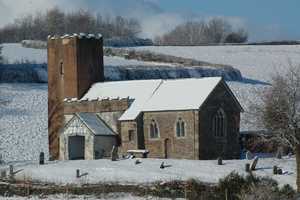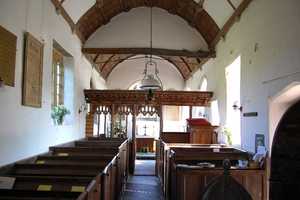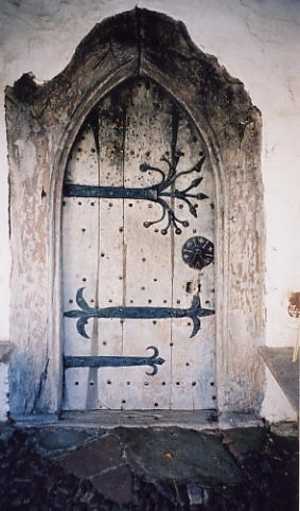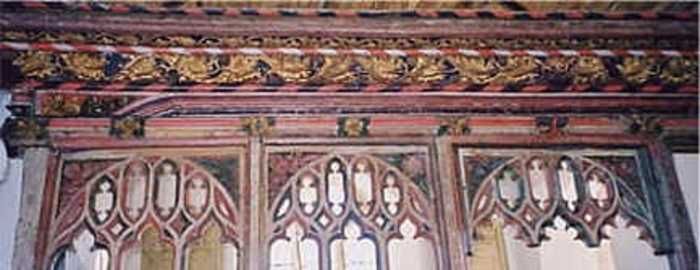Raddington Church

Churchwarden:
Mr Simon Coates,
Rectory Farm,
Raddington
TA4 2QW
01398 361271
raddington@wiveychurches.org.uk
First and third Sundays of month, as announced


The Tower is 13th century restored in 1695, roughcast rendered in 20th century.
The windows are 14th/15th century.
The Main Door is 14th century and is well preserved with beautiful iron hinges and back-plates .
The bells are 14th/ early 15th century and were renovated and re-hung 1986.
You can see evidence of medieval wall painting beneath the plaster in the nave.

The Rood Screen is very old and a gem, it bears on it some of the very finest naturalistic foliage carving executed undoubtedly by the same carver as at Uffculme.
The ravages of time and reconstructions of dubious quality have left their marks, but despite this it retains its medieval character and great charm.
Raddington Church. St. Michael's
"Balanced on the top of a small round hill looking like a picture in a fairy tale"
Such a situation is significant -- as is the dedication itself to the saint, Michael. Two things can be deduced there-from:
1 That this ancient sacred site was formerly a pagan one; all st. Michael's sites are likely to have been such since he, it is believed was the angel who threw the Devil out of Heaven. Anglo-Saxons called him when consecrating pagan sites for Christianity.
2 That as is claimed for many if not all St. Michael's Churches, it lies directly on a Ley line -- one of those mysterious lines of energy that are believed to radiate outwards from that most hallowed of English sites -- Glastonbury. All such churches are on Tor sites overlooking farm lands.
The origins of this Church could go back as far as King Alfred's time, or beyond. It's style is certainly early English with just a west tower, a nave with south porch and a chancel.
There is one feature extant that could lend authenticity to such an early dating -- the stoup for Holy Water inside the porch. Such stoups were common in very early churches, went out of fashion in medieval times and returned only in the 16th century.
